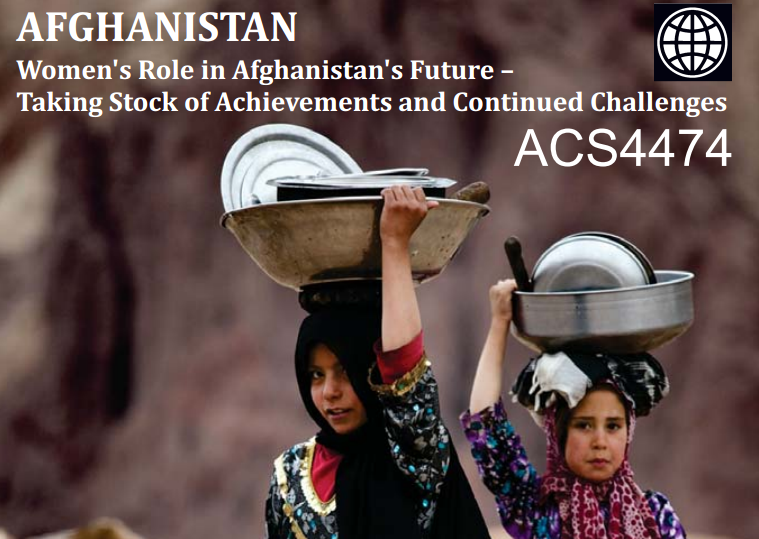
Source: World Bank
This report assesses the overall situation of women in Afghanistan across key sectors, acting as a follow-up to the report published by the World Bank in 2005 entitled, Afghanistan: National Reconstruction and Poverty Reduction – Role of Women in Afghanistan’s Future. What can be seen from the sectoral chapters (namely in health, education, work and employment, and legal rights and voice) included in this report is that, in sectors where concerted and coordinated efforts have been made among a collection of key actors (including the Government of Afghanistan, the donor community, NGOs and civil society, significant improvements have been achieved. Where well-planned systems have been designed and consensus has been garnered for the support of these systems, services are indeed reaching more women and girls, and communities are becoming more accepting of these services. What is also shown in the report is the innovative function that NGOs and civil society actors have played in some of the sectors discussed, developing new mechanisms to include and reach women.
The report also highlights areas in which significant improvement has been lacking, and a systematic approach to addressing some issues is still missing. The prevailing lack of reliable data makes understanding the issues faced by women in these sectors challenging. Each chapter in the report concludes by distilling key recommendations for the future, whether based on successes to date, or based on a lack of progress and critical gaps in specific areas. While specific issues can be identified as critical within each of the above sectors, what is also notable is that some issues cut across all sectors as prevailing barriers for women. One of these consistent themes is that the lack of female professionals in key areas poses a barrier to other women and girls accessing these services. Another cross-cutting impediment for women is insecurity, or the perception of insecurity. In each chapter, issues of regional inequality and disparity between rural and urban areas can be seen across key indicators. In addition, barriers such as a lack of mobility, limited transportation options, inadequate infrastructure that omits women-friendly features, and the prevalence of early marriage, tend to be repetitive cross-cutting barriers. Finally, the report concludes framed through the lens of the upcoming transition years in Afghanistan, when the Government of Afghanistan will take over more and more direct management of services and security.
Dari translation of the report will shortly become available.
Dowload complete report HERE

